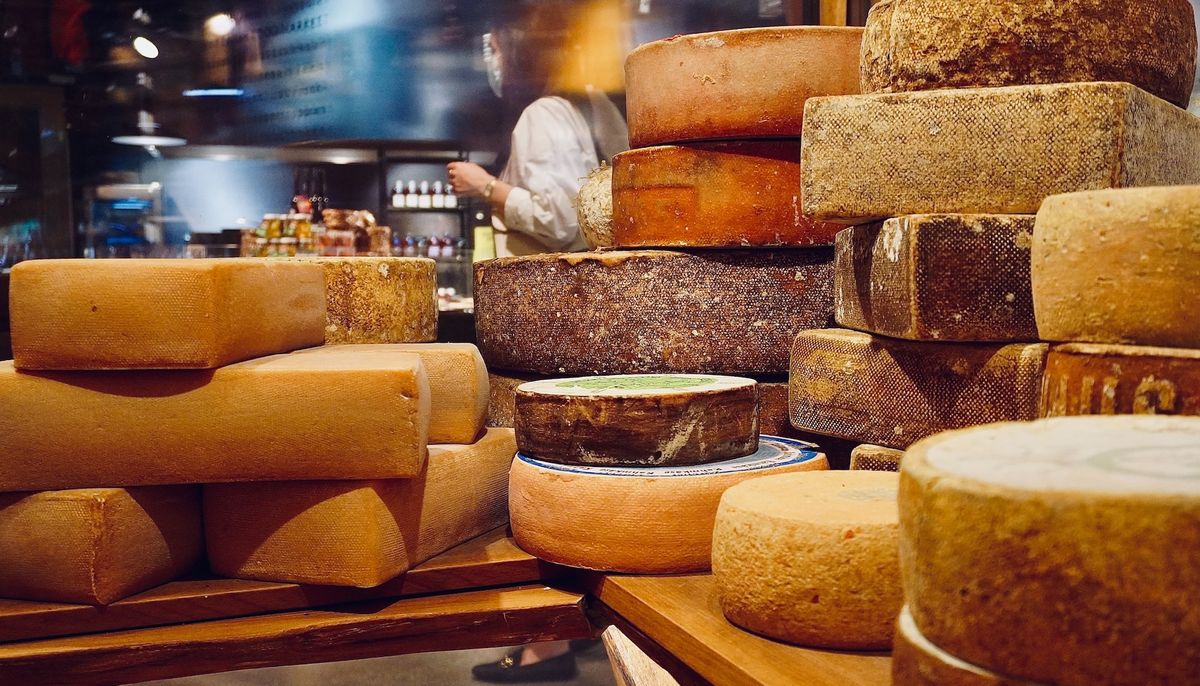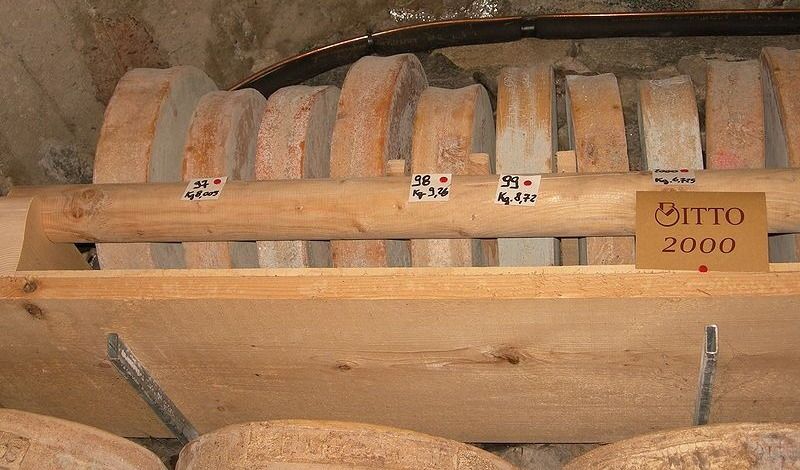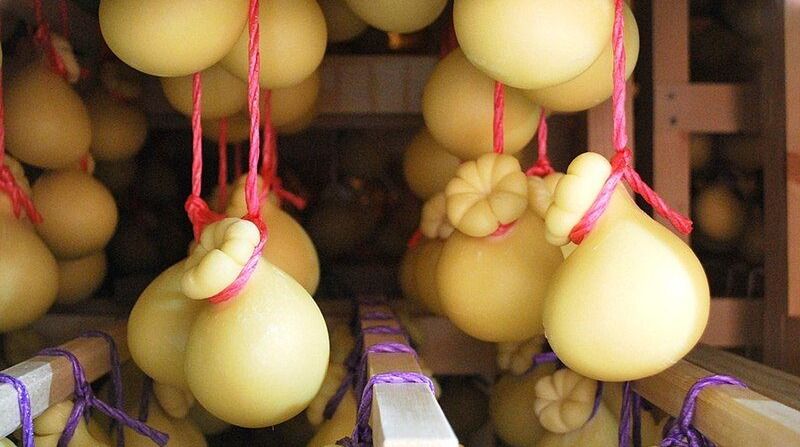Discover The Most Expensive Cheese in The World
Exploring the world of luxury cheeses can be a journey of sensory delight, with each cheese telling a story of its origin, the artisans behind it, and the unique processes that bring it to life.

Luxury cheeses, renowned for unique flavors and intricate production, often carry hefty price tags due to their rarity and regional characteristics. Served on a charcuterie board and paired with the prized culatello, their flavors are accentuated, creating a gourmet experience that delights the senses.
What is Cheese?
Cheese is a versatile food made mainly from the milk of animals like cows, goats, and sheep. To make cheese, you first acidify the milk, usually by adding special bacteria. This causes the milk to coagulate or thicken, forming curds.
By separating these curds from the liquid part called whey, and then aging them under controlled conditions, you get the vast array of cheeses we know today.
The time a cheese is aged can vary—soft cheeses might age for just a few days, while harder ones can mature for years. Beyond its delicious taste, cheese offers nutritional benefits, providing a good source of protein, calcium, and essential fats.
What Factors Determine the High Price of Cheese?
The price and quality of cheese depend on its ingredients and how it's made. Top-tier cheeses often come from animals like donkeys, moose or water buffaloes, which are tough to breed.
This rarity boosts both the cheese's excellence and its cost. So, while some cheeses are pocket-friendly, others can be quite pricey. Chefs and foodies know that buying luxury cheeses is an investment, especially since milk prices can change. This price change is because milk, the main ingredient in cheese, can cost differently depending on the region.
Making cheese is a detailed process. Big cheese companies use machines to make large quantities quickly. However, artisan cheese makers focus on quality. They make smaller batches and use age-old methods to get the right flavor and feel for each cheese.
What Are the Most Expensive Cheeses in the World?

1) Pule Cheese: $600 per pound
Pule cheese, prized for its exclusivity, owes its reputation to its unique production rather than luxurious ingredients. Originating from the tranquil Zasavica nature reserve in Serbia, this cheese is made from donkey milk.
In comparison to cows, a jenny produces a mere 1.5 to 2 liters of milk daily, a fraction of what cows produce.
The distinct nature of donkey milk adds to the challenge. It has fewer solids than cow milk, which means a greater volume is needed to produce the same amount of cheese.
Furthermore, the absence of machinery suitable for milking donkeys demands a labor-intensive approach. Donkeys are milked by hand, and this occurs three times daily. These combined elements — limited milk production, its composition, and intensive manual labor — together amplify Pule cheese's cost and rarity.
Flavor Profile
Pule cheese, when observed, resembles a small round of goat's cheese, albeit with a slightly yellower tint and a less crumbly texture. In terms of taste, Pule stands out distinctively from other cheeses globally. It boasts a sweet, fresh, and gentle flavor, bearing only a faint resemblance to a young Manchego.
2) Moose: $500 per pound
Sweden offers more than picturesque landscapes; it presents the rare Moose Cheese. Milking a moose is a unique challenge, which might be why moose milk cheese from The Elk House in Bjurholm, Sweden is so precious. Three moose, named Gullan, Haelga, and Juno, are the source of this delicacy.
These moose provide milk from May to September, and gathering their daily five-liter yield requires patience and care.
The Johansson family, who runs The Elk House, crafts four variations of cheese from the nutritious milk: a soft cheese reminiscent of Camembert; a rich blue cheese; a matured blue version; and a popular feta stored in vegetable oil.
This feta, noted for its gentle tang and creamy feel, is their most sought-after product. Though some Swedish restaurants feature these cheeses, they remain a local specialty.
Flavor Profile
Moose cheese offers a creamy consistency accompanied by a distinctively mild and slightly tangy flavor profile. Unlike traditional cheeses, its taste has nuanced undertones that can sometimes hint at the natural diet of the moose. When infused with ingredients like truffles or herbs, its flavor deepens, creating a unique palate experience with a fresh and clean finish.
3) White Stilton Gold Cheese: $450 per pound
The White Stilton Gold, known as Britain's most expensive cheese, incorporates genuine gold and hails from Long Clawson Dairy in Leicestershire. Long Clawson Dairy, established in 1911, witnessed Stilton cheese receiving European 'Protected Designation of Origin' (PDO) status in 1996.
Consequently, only cheese crafted in three specific English counties - Derbyshire, Nottinghamshire, and Leicestershire - using time-honored recipes can be authentically termed 'Stilton'. Notably, Long Clawson had already gained fame for their blue Stilton cheeses.
White Stilton is made from full-cream pasteurised cow's milk crafted without applying pressure, matures naturally. Its creation involves pasteurizing the milk, transferring it to vats with starter cultures and coagulant, and forming curds. Post curd formation, they're diced and salted before being placed in cylindrical molds. The maturation duration can fluctuate based on factors like milk quality and production techniques.
Flavor Profile
White Stilton cheese boasts a creamy yet crumbly texture that effortlessly melts in the mouth. Its flavor is mild, delicate, and slightly tangy. Frequently combined with fruits like apricots or cranberries, it introduces sweet nuances, making it perfect for desserts or breakfast spreads. This fruit-infused touch accentuates its subtle nature, ending with a clean finish and a gentle hint of acidity.
4) Wyke Farms Cheddar: $200 per pound
Wyke Farms, situated in Somerset, England, is the UK's leading independent cheese producer with roots tracing back to 1861.
Famed for its exquisite mature cheddar, the cheese owes its unique flavor to the cows that feed on the farm's lush pastures and the distinct Somerset weather, marked by gentle summers and rain-rich winters. This climate gifts the cheddar its creamy depth and sharp nuances.
The cheese-making journey starts with milking these well-fed cows. This fresh milk undergoes pasteurization before being transferred to vats.
Here, the addition of a starter culture and coagulant leads to the formation of curds. After cutting these curds to release the whey, they're salted and shaped through pressing. A defining trait of their cheddar is its aging process; it matures in wooden boxes for up to a year, always under the close watch of skilled cheesemakers.
Flavor Profile
It possesses a creamy smoothness that's balanced with a hint of sharpness. The aging process, often within wooden maturing boxes, lends it depth and complexity. Over time, it develops notes that range from slightly tangy to nutty, making it a favorite among cheese connoisseurs.
5) Bitto Cheese: $150 per pound

Valtellina's Bitto Storico, distinguished as the world's oldest edible cheese, offers an impressive maturation of up to 18 years, overshadowing even the well-regarded 18 to 36-month aged Parmigiano-Reggiano. A testament to its value, a 15-year-old wheel once sold for a staggering $6,400 in China.
With only 12 producers in the Bitto River valley crafting this cheese, Bitto Storico's rarity is unparalleled. Its nuanced flavors are attributed to cows and goats that graze on native vegetation, imparting variations in taste each year.
Made predominantly from cow's milk, it's enriched with 10-20% Orobica goat’s milk from the Bergamo Alps, allowing for extended aging. Adhering to deep-rooted traditions, production takes place in the mountainous terrains of 1400 to 2000 meters. In these altitudes, cheese makers use ancient stone shelters, caléccs, and craft cheese in copper cauldrons over open flames during summer.
Bitto Storico commences its aging at 70 days, with enthusiasts often waiting five years or restaurants up to a decade to unveil its richness. To don the esteemed "Bitto Storico" title, makers forgo additives and modified feeds, setting it apart even from its cousin, Bitto DOP, and fortifying its legendary status.
Flavor profile
This cheese is soft and white, reminiscent of gruyère in its sweet flavor. With time, it develops a crumbly texture, and the rind displays small white specks. Aged for a year, it turns a yellow hue, acquires a potent flavor, becomes as firm as Parmesan, and is suitable for grating.
6) Caciocavallo Podolico: $50 per pound

Caciocavallo Podolico, often hailed as the "Grana Padano of the South," is a distinctive Italian cheese best enjoyed solo. Its unique amphora shape, coupled with a name translating to "horse cheese," stems from the traditional method of hanging paired cheeses on beams for aging.
The "Podolico" variety, characterized by its straw-yellow texture, is sourced exclusively from the milk of the "podolica" bovine, notable for its grey color and grand horns. These cattle roam the Apennine regions from Abruzzo to Apulia. Though their numbers have dwindled to around 25,000, efforts backed by the Slow Food movement aim to preserve this rustic breed, originally from Ukraine's Podolia.
In production, caciocavallo belongs to the stretched-curd family, akin to mozzarella. Made from daily milkings, the curd undergoes granulation, aging, and skillful molding into its iconic shape before cooling, brining, and maturing. Peak production happens between March and May.
Flavor Profile
Caciocavallo offers a unique blend of a soft yet firm texture, characterized by its elasticity and stringiness. Its taste subtly combines mild saltiness with undertones of spice and tang. It caters to both adventurous cheese enthusiasts and those preferring milder flavors.


